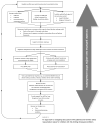Is There Ever a Role for the Unilateral Do Not Attempt Resuscitation Order in Pediatric Care?
- PMID: 28916293
- PMCID: PMC5735032
- DOI: 10.1016/j.jpainsymman.2017.09.006
Is There Ever a Role for the Unilateral Do Not Attempt Resuscitation Order in Pediatric Care?
Abstract
Care for children as they near the end of life is difficult and very complex. More difficult still are the decisions regarding what interventions are and are not indicated during these trying times. Occasionally, families of children who are nearing the end of life disagree with the assessment of the medical team regarding these interventions. In rare cases, the medical team can be moved to enact a do not attempt resuscitation order against the wishes of the patient's parents. This article presents one such illustrative case and discusses the ethical issues relevant to such challenging clinical scenarios. The authors posit that such a unilateral do not attempt resuscitation order is only appropriate in very limited circumstances in pediatric care. Instead, focus should be placed on open discussion between parents and members of the clinical team, shared decision making, and maintenance of the clinician-parent relationship while simultaneously supporting members of the clinical team who express discomfort with parental decisions. The authors propose an alternative framework for approaching such a conflict based on clinician-parent collaboration and open communication.
Keywords: Ethics; decision making; do not attempt resuscitation; do not resuscitate; futility; pediatrics.
Copyright © 2017 American Academy of Hospice and Palliative Medicine. Published by Elsevier Inc. All rights reserved.
Figures
Similar articles
-
Futility: unilateral decision making is not the default for pediatric intensivists.Pediatr Crit Care Med. 2012 Sep;13(5):e311-5. doi: 10.1097/PCC.0b013e31824ea12c. Pediatr Crit Care Med. 2012. PMID: 22760427
-
Communication with parents concerning withholding or withdrawing of life-sustaining interventions in neonatology.Semin Perinatol. 2014 Feb;38(1):38-46. doi: 10.1053/j.semperi.2013.07.007. Semin Perinatol. 2014. PMID: 24468568 Review.
-
Autonomy versus futility? Barriers to good clinical practice in end-of-life care: a Queensland case.Med J Aust. 2012 Apr 2;196(6):404-5. doi: 10.5694/mja10.10969. Med J Aust. 2012. PMID: 22471543 Review.
-
Unilateral pediatric "do not attempt resuscitation" orders: the pros, the cons, and a proposed approach.Pediatrics. 2014 Feb;133 Suppl 1:S37-43. doi: 10.1542/peds.2013-3608G. Pediatrics. 2014. PMID: 24488539
-
Ethical issues in geriatrics: a guide for clinicians.Mayo Clin Proc. 2004 Apr;79(4):554-62. doi: 10.4065/79.4.554. Mayo Clin Proc. 2004. PMID: 15065621 Review.
Cited by
-
Integration of Pediatric Palliative Care Into Cardiac Intensive Care: A Champion-Based Model.Pediatrics. 2019 Aug;144(2):e20190160. doi: 10.1542/peds.2019-0160. Pediatrics. 2019. PMID: 31366685 Free PMC article.
-
Pediatric Brain Death Testing Over Parental Objections: Not an Ethically Preferable Option.Am J Bioeth. 2023 Jan;23(1):90-93. doi: 10.1080/15265161.2022.2146792. Am J Bioeth. 2023. PMID: 36595010 Free PMC article. No abstract available.
References
-
- Bosslet GT, Pope TM, Rubenfeld GD, et al. An Official ATS/AACN/ACCP/ESICM/SCCM Policy Statement: Responding to Requests for Potentially Inappropriate Treatments in Intensive Care Units. American journal of respiratory and critical care medicine. 2015;191(11):1318–1330. - PubMed
-
- Kon AA, Shepard EK, Sederstrom NO, et al. Defining Futile and Potentially Inappropriate Interventions: A Policy Statement From the Society of Critical Care Medicine Ethics Committee. Critical care medicine. 2016;44(9):1769–1774. - PubMed
-
- Jameton A. Nursing practice : the ethical issues. Englewood Cliffs, N.J: Prentice-Hall; 1984.
-
- Hamric AB. Empirical research on moral distress: issues, challenges, and opportunities. HEC forum : an interdisciplinary journal on hospitals’ ethical and legal issues. 2012;24(1):39–49. - PubMed
-
- Campbell SM, Ulrich CM, Grady C. A Broader Understanding of Moral Distress. The American journal of bioethics : AJOB. 2016;16(12):2–9. - PubMed
Publication types
MeSH terms
Grants and funding
LinkOut - more resources
Full Text Sources
Other Literature Sources


